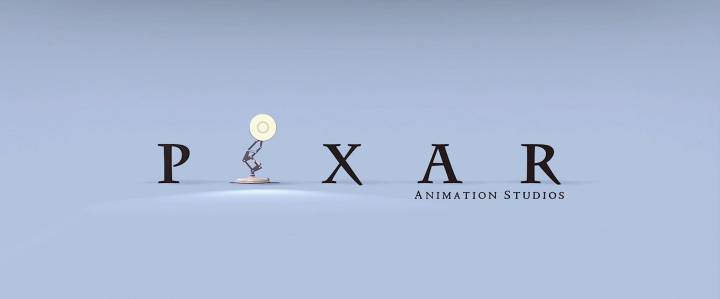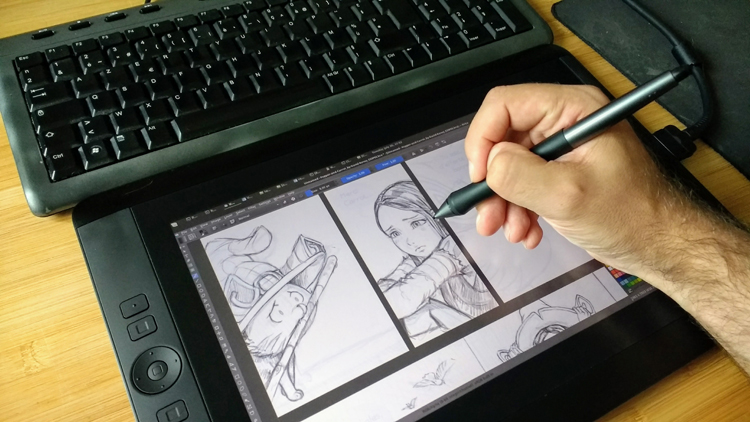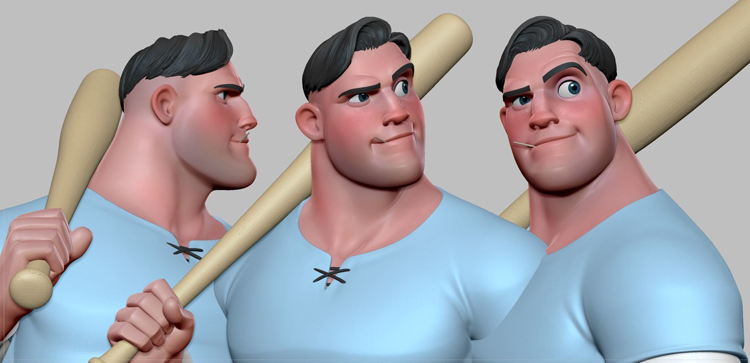Tips for creating 3D cartoon characters design from professionals
A character is the main figure of any animation, so he should be paid a rather large amount of attention. In this article you will find tips that will help when creating a bright and believable 3D cartoon character design. Another good way to learn tips about 3D cartoon characters design is watching how Pixar studio creates cartoon characters.

Any art from is a social phenomenon, a frank conversation between the viewer and the audience. That is why, before the 3D cartoon character designer comes up with a character, he needs to learn two things: what he wants to say with the help of this character, what feelings he evokes and what the interlocutor is, whether he can understand what you want to say.
Making a character for, let’s say, teenagers from 15 to 18 years old requires one approach, and for adults from 25 to 35 years old is another.
The fact is that before the character begins to act, you need to make the viewer think that this character is a living creature with emotions, desires, fears, goals. If the viewer does not believe this, then no conversation between the author and the viewer will take place, and, as a result, the character will be left without attention, like an unnecessary cardboard.
- Focus on facial expressions|
Tex Avery, the creator of Duffy Duck, Bugs Bunny and other characters we love, never neglected facial expressions, developing his characters, and this made them popular. Depending on the character of the character, his emotions can be either pronounced or slightly hidden, therefore, when developing your hero, think about his personal qualities and, based on this, work on his facial expressions. An excellent example of the work of the legendary Tex Avery is the wolf, whose eyes flew out of the skull when it was excited. On the other hand Droopy can be put, who seems to have no emotions at all.
- Make your characters special
When The Simpsons were created, its designer knew that he had to offer the audience something special, something that would be different from the rest of the TV show. Therefore, he decided that when the viewer flips through the channels and stumbles upon a cartoon with yellow-skinned heroes, he cannot help but become interested in them. Whoever your character is, try to make him as little as possible similar to all the heroes that preceded him. It should have interesting visual qualities that will be unusual for the viewer. Like yellow skin and four fingers on hands instead of five, for example. - Experiment
Rules are created in order to break them. At least that’s what Yuck thinks. When he creates his characters, he does not know who he is painting. “I listen to music and draw a result that depends on my mood: strange or cute characters. I always want to draw what interests me. Later I refine the hero”, he says. - Understand who you are drawing for
Think about your audience. For adults and for children you need to choose completely different interaction tools, colors, and characters.
An order of 3D cartoon character design usually implies more frameworks in which the designer needs to fit it, but that does not mean that creativity is needed less.
Customers have specific needs, but they also want the designer to do his job. Usually the specialist starts with the main features and character of the character. For example, if the eyes are important, then he will build a design around the face so that the main part stands out. - Study
Never work without materials, always look for something that you can push off from. Take photos of people who can be a good basis for your work. For example, their clothes, hairstyle, face. Even if your character is not human, think about where he got his DNA from and start from it. As soon as you start working with examples, your work will become clearer and more engaging. - Start easy
Always start with simple forms. Squares are good for strong and tough characters, and triangles will be perfect if you want to make the character scary. Well, if you want a friendly character, then use smooth lines.
It is worth remembering that no matter how complex the character is, it consists of simple elements. Starting from simple, you will gradually layered elements and as a result you will get a complete image.
- Technique is not the most important thing
Sketching skills will greatly help you if you want to represent the character in various poses and from different angles. And this skill requires practice. But to create a reliable and atmospheric character, these skills are not so important.
The designer must try to delve into the character, highlighting his oddities, combining them and working on them. The designer draws many different variations of one character until he is satisfied with one of them. - Make up a story
If you want your character to exist not only in the cartoon or comic, then you should spend time and come up with his story. Where he came from, how he appeared, what happened in his life – all this will help create integrity. Sometimes a character’s story is more interesting than his current adventures. - Hone the character
An interesting appearance does not always make a character interesting. His character is the key, the character must be consistent in his emotions and actions. At Pixar, they believe that character should be pronounced, unless you specifically make your character boring. - The environment
Another Pixar rule is to work on the character’s environment. If you want your character to be believable, then make the world around him believable. Think over the environment and make it work for the good. The fact is that a character without a scene or environment is felt as if in a void, it is much more difficult to believe in its reality. If a viewer has a clear picture of the world, the character gains a “home”, the ground under his feet, and everything falls into place.

Leave a Reply
Want to join the discussion?Feel free to contribute!